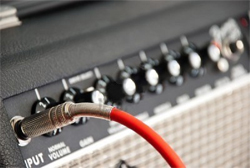The world may not revolve around guitar music anymore, but there is still a lot of it out there.
Whether you’re working on face melting hardcore or a gentle country ballad, the presentation of the guitar content in the mix has a lot to do with the overall stylistic impression of the song.
Here are a few tried and true techniques for working with guitar tracks:
1. Hear the Arrangement
Some guitar tracks are played and recorded to stand out as focal points in the mix. Other guitar parts are intended to work as tonal layers of another instrument.
Before you dive into the mix (or even the tracking session), take a moment to consider why each guitar track exists.
You’re probably going to come up with one of three answers:
—It’s a musical focal point, a source of interest and energy in the song.
—It’s a rhythmic element that adds tonal complexity to a percussive instrument.
—It’s not musically functional at all (and should be muted).
With your answer in mind, you’ll have a great benchmark for evaluating the guitar parts within the mix, as opposed to evaluating them as individual elements.
2. Pick a Level Before You Pick a Tone
With musical function in mind, decide what the basic balance structure is going to be between the guitar elements and the drum and/or vocal content.
If your guitar tracks are co-stars of the arrangement, they’re going to be loud. Reference how loud ‘loud’ guitars are in effective mixes within the same musical genre. The answer will vary widely.
I’d suggest referencing guitar level compared with the vocals (assuming there is one) and the loudest drum content.
If your guitar tracks are supporting players in a layered tone, start by establishing the internal balance relationships within the layered sound.
For example, if your guitar part was played to brighten a piano idea, establish that basic balance before you try to balance the layered effect within the mix.
Once the layers are roughed in (compared with one another), use an audio subgroup or fader group to easily balance the layered tone within the main mix.





















